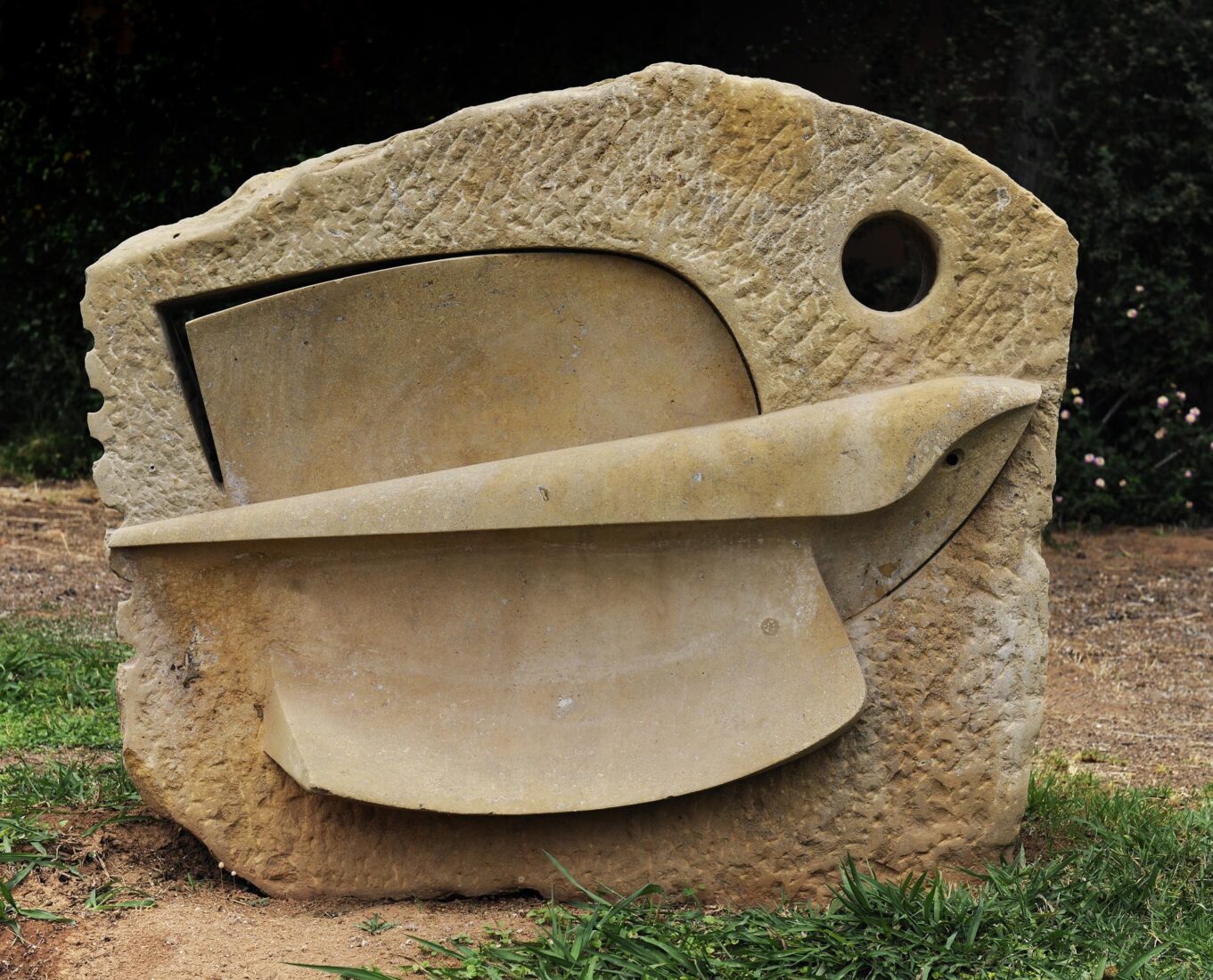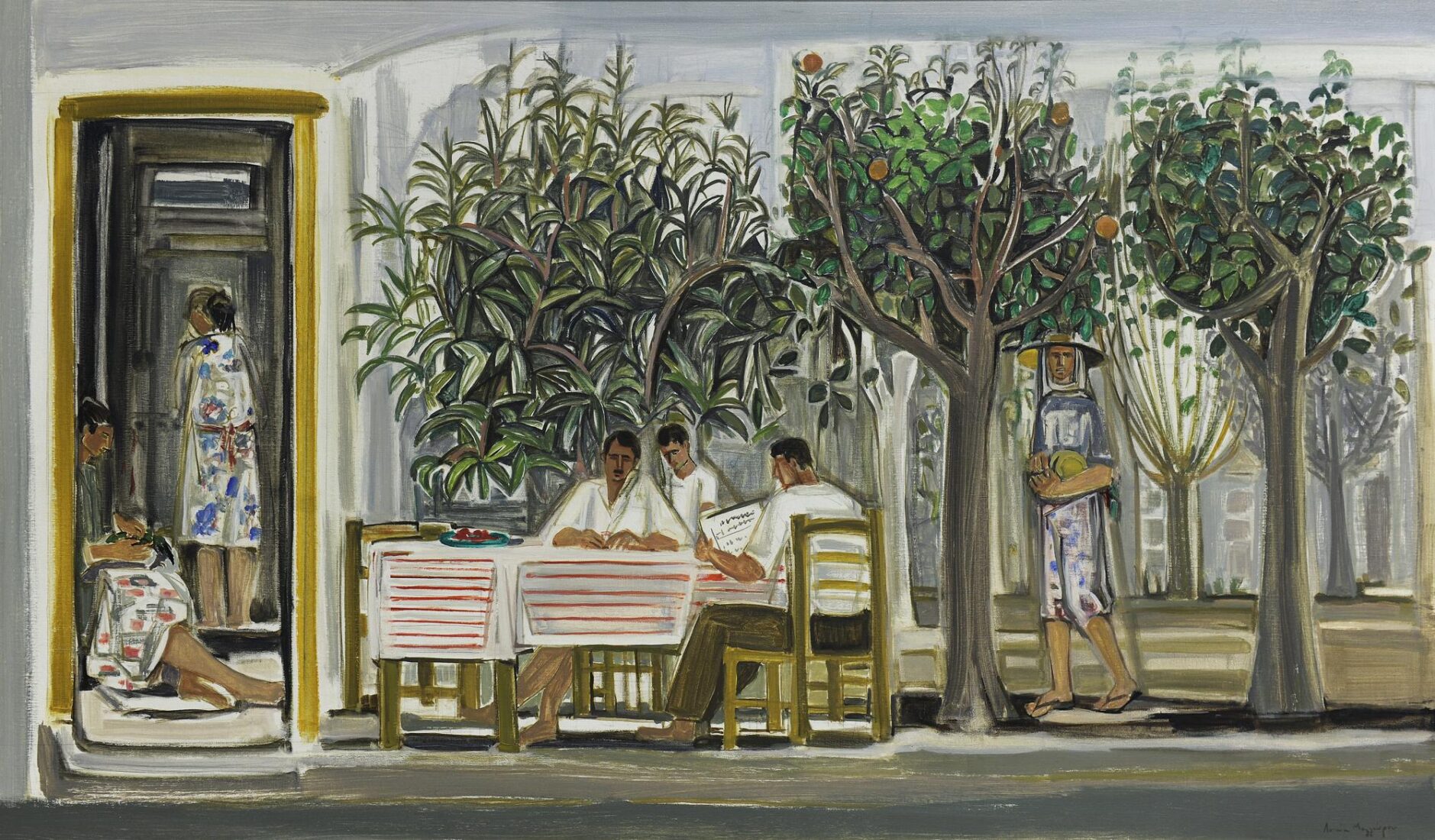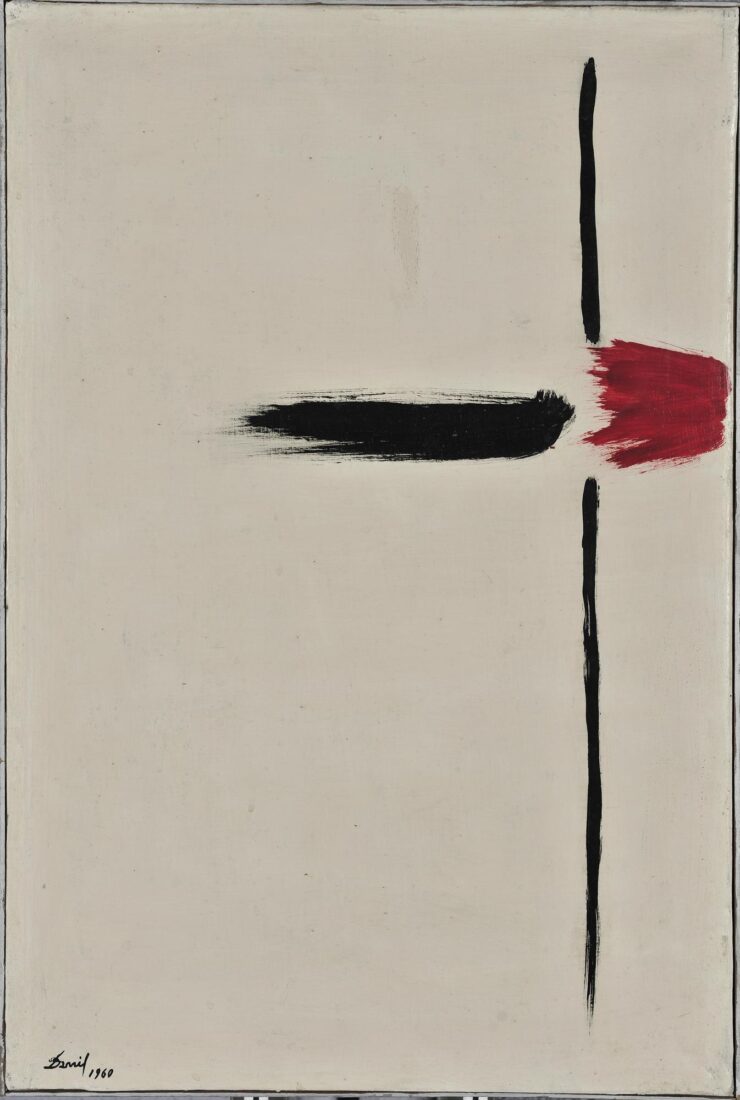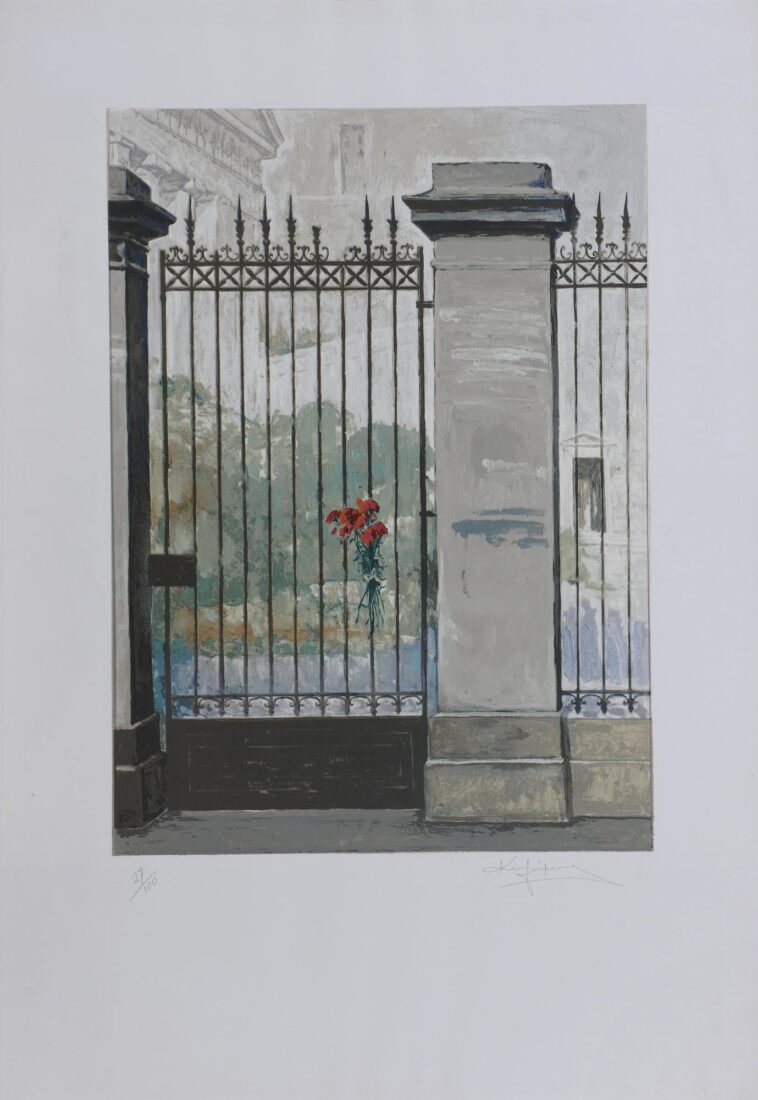




Samarkand, the subject of the work, charged with myths, Eastern mysticism and
centuries-long history, led me to search for a formal entity worthy of the richness
of its meanings. It was an endeavor in the dark, a journey on the Silk Road, a dive
into the senses of the East.
Undermining the logic of material data, transforming the visible into a vision, the
work ultimately reaches beyond its thematic mission. Then, this enclosed formal
entity, self-luminous and sacred, touches us and life seems to disregard the inevitability
of the sarcophagus.



The full-length male figure, heir to the ancient Kouros, dominates Joannis Avramidis’ oeuvre. However, his is a figure that is stripped of every descriptive detail. Schematized, it stands upright, self-contained, imposing and static, like an ancient column.
The solitary figure-standard, as of 1959, constituted the core of his group compositions. The figures create a unit and frequently result from the revolving of the ancient figure around its axis. In this manner, Avramidis conveyed the idea of the ancient Greek “Polis” (City-State) in his sculpture of the same title. The repetition of the ancient figure nine times creates a compact group of identically-sized figures with like features. The piece thus personifies the idea of a community in which all its citizens are equal.


Dionyssis Gerolymatos is one of the few sculptors still working in the traditional sense, that is, he works with hard materials – stone, marble, cement. His thematic field includes works taken on commission as well as compositions of free inspiration, small or large. Since his student years, he has made use of extreme schematization, which, in his later works, is sometimes transformed into abstraction. Employing an expressionistic or surrealistic style, he gives form to thoughts, feelings, and impressions, while frequently poetry is also a motivation behind compositions through which he illustrates verses.
The “Stone of Patience” is a characteristic example, where a line from George Seferis is taken as the title of a work, while other of the poet’s verses are engraved on the side. Using stone, a hard material, Gerolymatos combines the external volume, left deliberately rough, with a piece ground smooth which then takes on the schematic form of a bird with open wings – symbol of freedom and hope – and thus creates his own image, an optimistic one, for the poetic words.



Thomas Thomopoulos was one of the last Greek sculptors to do post-graduate work in Munich, during a period when most other artists had already turned to Paris. This fact, however, did not prevent him from nourishing a deep admiration for the sculpture of Rodin and to be considered during his time as the “introducer of the Rodinian School in Greece”. His work combines academicism with symbolism and romantic tendencies, which are all derived from the French artist’s style, while in a number of compositions he also adopts a realistic form of depiction.
“Centaur” is a work inspired by Greek mythology, an echo, perhaps, in terms of theme, of “Female Centaur” (circa 1887) by Rodin. The “Centaur” is depicted at a moment of crisis, as a snake has wrapped itself around his body. His reaction to the deadly attack is shown by the contraction of the body backward and his right hand brought to his brow, a pose obviously based on the Hellenistic Laocoon group. Conversely, the fluid and soft surfaces and the naturally evolved base which also acts as a support, reveal the influence of Rodin’s plastic perceptions. The sculpture was painted using the encaustic method, as were quite a few of Thomopoulos’ works, who introduced this innovation around 1900.

Constantinos Dimitriadis could be characterized as Rodin’s most consistent representative in modern Greek sculpture. He adopted the French artist’s style of modeling forms and used the same subject matter as a point of departure.
“To the Dreams Left Behind and Defead” is a characteristic example. It was to have been the central scene in a larger iconographical sculpture group titled “Life’s Defeated”. Nine individual scenes were to comprise the whole, references to the failures, disappointments, dilemmas and efforts of ordinary human beings in the course of life.
Dimitriadis carved two versions of “Dreams Left Behind and Defeated”. In the first, an unseen figure covered by the veil of Destiny rises up to envelop a couple. The second version is on display in the National Glyptotheque.
The powerful, muscular man, here, seems to have surrendered to his fate. His facial expression imparts a sense of forbearance, perhaps even reverie. The woman, curled up as if seeking protection, leans towards her companion.
The man’s well-defined musculature and the woman’s soft curves are elements that characterize many of Dimitriadis’ works and reveal the influence of Rodin’s views on modeling forms. The same is true for the heavy, unrefined block of marble that frames the figures, allowing them to emerge as nearly carved in the round.












